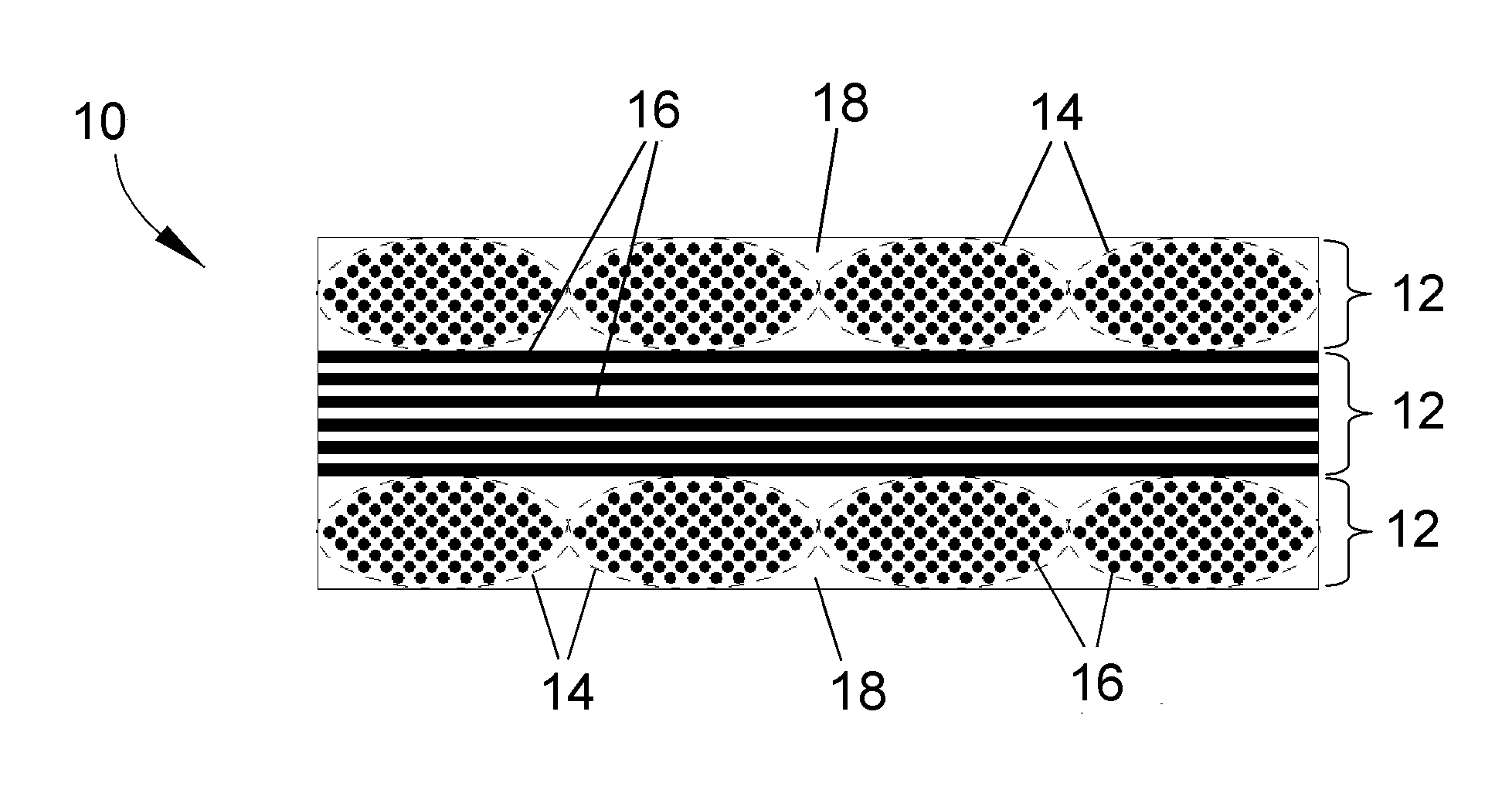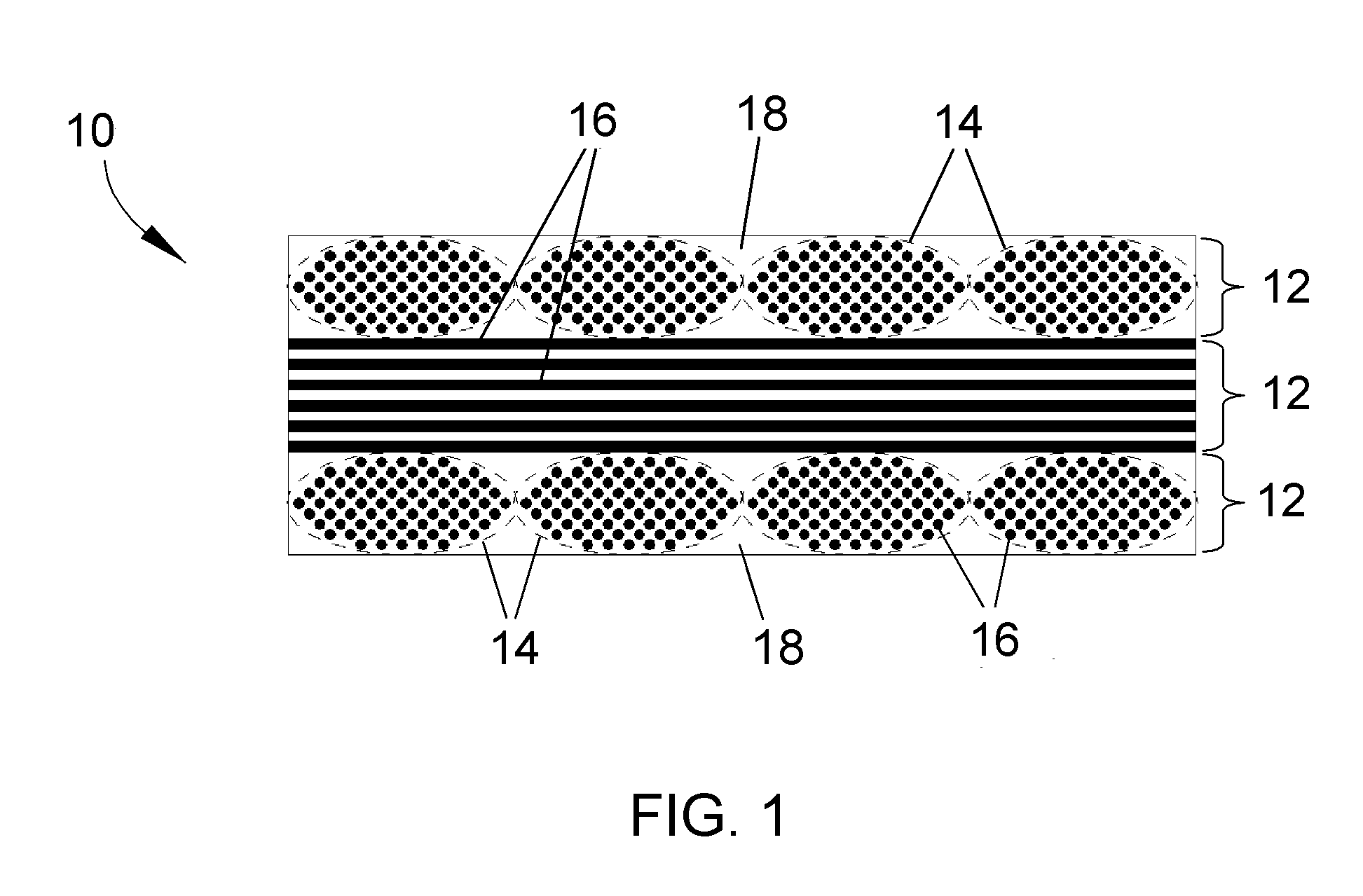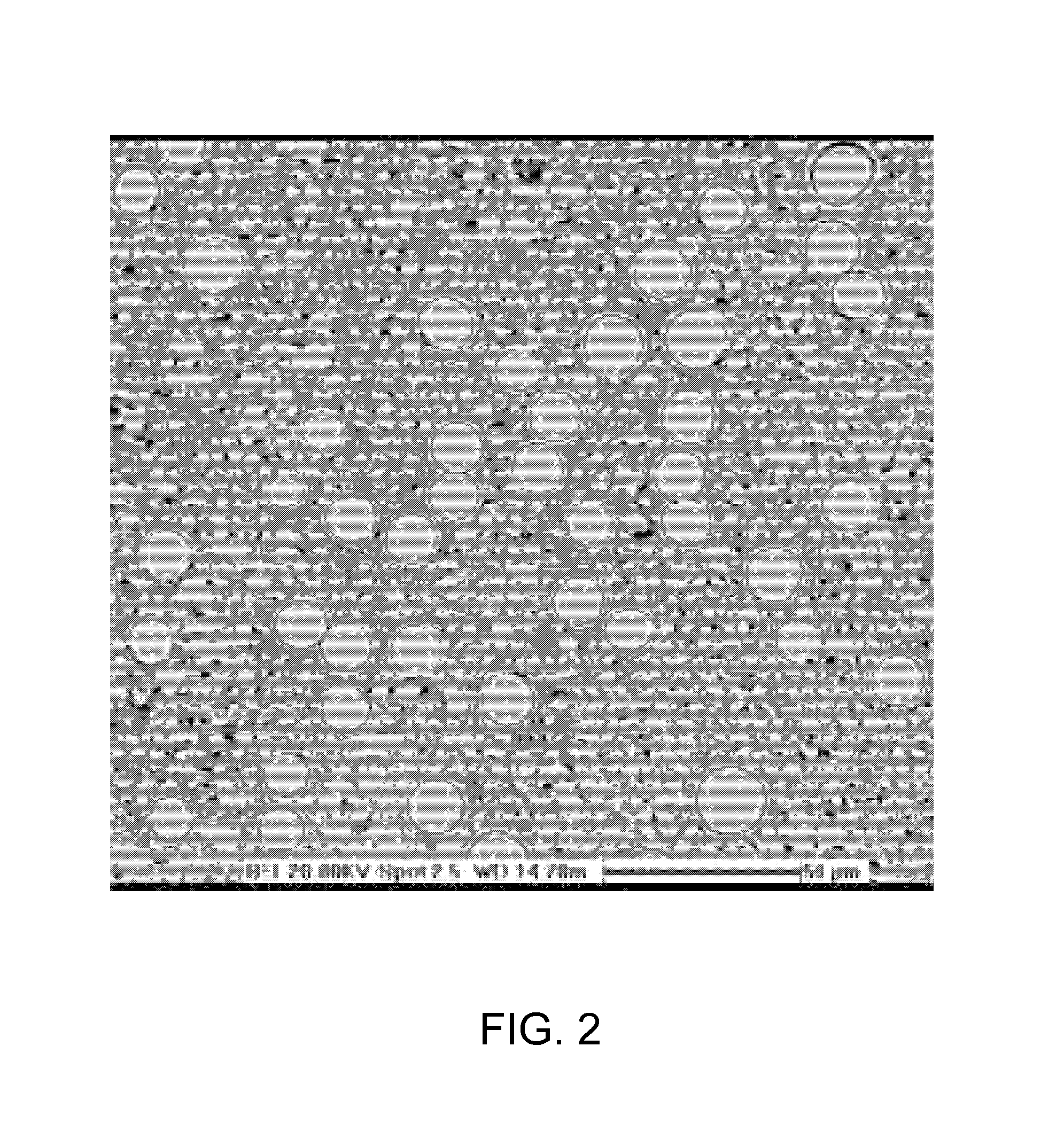Process of producing ceramic matrix composites and ceramic matrix composites formed thereby
a ceramic matrix and composite technology, applied in the field of ceramic matrix composites and ceramic matrix composites formed thereby, can solve the problems of not being fully dense and porous, and achieve the effect of exceeding the melting point of elemental silicon
- Summary
- Abstract
- Description
- Claims
- Application Information
AI Technical Summary
Benefits of technology
Problems solved by technology
Method used
Image
Examples
Embodiment Construction
[0019]The present invention will be described in terms of processes for producing CMC articles, including CFCC articles, that can be used at temperatures exceeding the melting point of low-melting silicon alloys (for example, about 1357° C.), and preferably up to temperatures of at least 1480° C., and therefore well over the melting point of silicon and low-melting alloys thereof. CMC materials of particular interest to the invention are those containing silicon, such as CMC's containing silicon carbide as the reinforcement and / or matrix material, a particular example of which is continuous silicon carbide fibers in a matrix of silicon carbide. However, other silicon-containing materials are also within the scope of the invention, including ceramics such as silicon nitride and silicides (intermetallics) such as niobium silicide and molybdenum silicide. While various applications are foreseeable, particular applications for the component 10 include components of gas turbine engines, ...
PUM
| Property | Measurement | Unit |
|---|---|---|
| temperatures | aaaaa | aaaaa |
| temperature | aaaaa | aaaaa |
| melting point | aaaaa | aaaaa |
Abstract
Description
Claims
Application Information
 Login to View More
Login to View More - R&D
- Intellectual Property
- Life Sciences
- Materials
- Tech Scout
- Unparalleled Data Quality
- Higher Quality Content
- 60% Fewer Hallucinations
Browse by: Latest US Patents, China's latest patents, Technical Efficacy Thesaurus, Application Domain, Technology Topic, Popular Technical Reports.
© 2025 PatSnap. All rights reserved.Legal|Privacy policy|Modern Slavery Act Transparency Statement|Sitemap|About US| Contact US: help@patsnap.com



